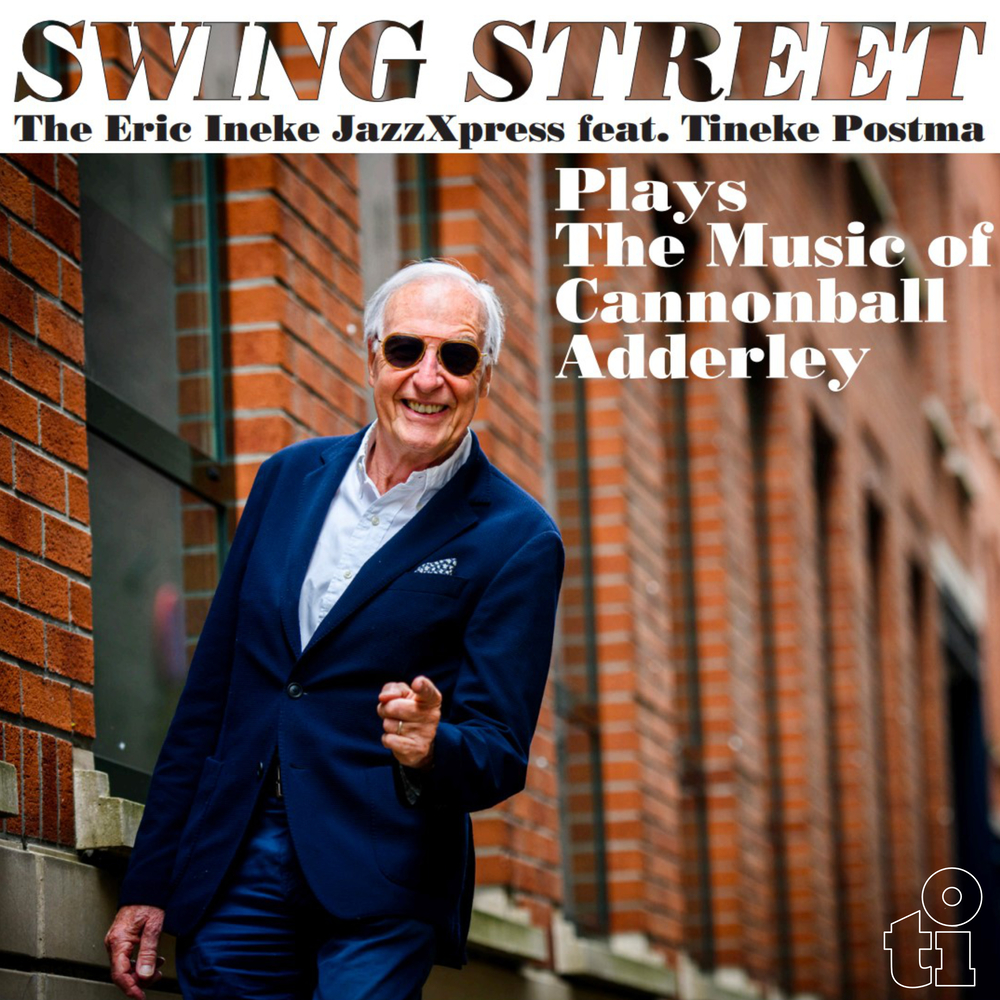Sharpshooters of The Eric Ineke JazzXpress are having a cannonball.

Personnel
Nico Schepers (trumpet), Sjoerd Dijkhuizen (tenor saxophone), Tineke Postma (alto saxophone), Rob van Bavel (piano), Marius Beets (bass), Eric Ineke (drums)
Recorded
on June 26, 2024 at Studio De Smederij, Zeist
Released
as Timeless SJP495 in 2024
Track listing
Azule Serape / P. Book / Domination / Dizzy’s Business / Planet Earth / Jessica’s Birthday / Gemini / Work Song / The Chant / Unit 7
Eric says: “The singer and photographer Jurjen Donkers was taking pictures of me in a little street behind (jazz-minded, FM) Society De Witte in The Hague. When I saw the results, the title seemed appropriate and a good choice. Ultimately, swing is my thing.”
The latest recording of his quintet – a sextet here with the inclusion of alto saxophonist Tineke Postma, (she was also featured on What Kinda Bird Is This?) – is dedicated to Cannonball Adderley’s repertoire. It predominantly consists of compositions from the early/mid-1960’s, an interesting and fruitful period in Cannonball’s career, stimulated by excellent songwriting bandmates as Victor Feldman, Yusef Lateef, Sam Jones and colleagues Jimmy Heath and Quincy Jones.
Tantalizing stuff. Like for instance Lateef’s Trane-inspired P. Bouk, a showcase for the tenor saxophone of Sjoerd Dijkhuizen, a strong Northern wind. As ever, Dijkhuizen fluently and lively finds a spot between Mobley and Gordon, a must-hear cat, heir to great forerunners as Ferdinand Povel. Or Lateef’s Planet Earth, a green safe haven for Tineke Postma, who moves like a dragonfly, free and easy, and pianist Rob van Bavel, who is a slender and swifter version of Tarzan swinging from vine to vine, a phenomenal acrobat. On the album as a whole this European master pianist’s strong and richly layered left hand voicing is an important asset.
Feldman’s Azule Serape is an explosion of joyful sounds, propelled by the pulsating rhythm of maestro Ineke. The band succeeds to revive Nat Adderley’s chain gang classic Work Song (the odd tune from early Cannonball), set in motion by an intriguing Van Bavel intro, a seemingly unrelated groove that further down the road segues into the tune with proclamatory horn riffs. The band puts plenty fluent swing into Jessica’s Birthday by the late Quincy Jones, not least Belgian trumpeter Nico Schepers, nice ‘n’ dirty and with a full bright tone.
Cannonball Adderley’s Domination is a gem of merely 3 minutes, an outstanding ensemble piece and arrangement that features unison bass/alto and a bass solo by Marius Beets, who on this record, as is his custom, succeeds at being ‘The Dutch Ray Brown”, simultaneously bossy and supportive. All strong arrangements on Swing Street are by Beets, Van Bavel and Dijkhuizen.
Swing Street is farm-fresh hard bop and exciting from start to finish, really. For approximately eighteen years, The Eric Ineke JazzXpress has set the bar high for American like-minded hard-swinging outfits as One For All and Heavy Hitters. And there seems to be no end to its fervor.
Listen to Swing Street here: https://www.youtube.com/results?search_query=Eric+Ineke+Swing+Street
Better still, buy here: https://www.platomania.nl/search/results/?q=ERIC%20INEKE%20JAZZXPRESS%20FEAT.%20TINEKE
Photos: Eric Ineke JazzXPress (Jurjen Donkers); Tineke Postma; Cannonball Adderley.
























